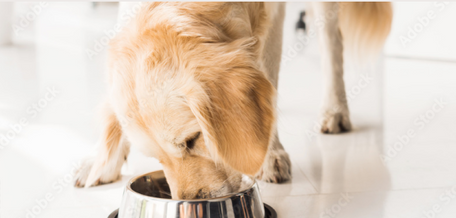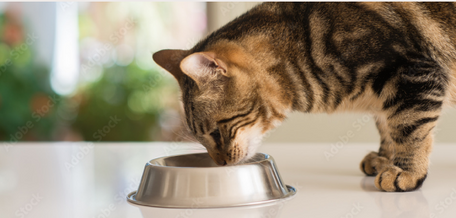
Raw pet food is becoming a top choice for pet owners who want to feed their pets a diet that echoes what their ancestors ate in the wild. With claims that it boosts digestion and enhances overall health and vitality, it's easy to see why it's gaining traction. But is there actual science behind these benefits? In this blog post, we will unpack the potential advantages of raw pet food, examining the scientific evidence that supports these claims.
Unpacking the Claims: The Science Behind Raw Pet Food
Now that we’ve touched on why raw pet food is catching the eyes of many pet owners, it's time to dive deeper and scrutinize the benefits these diets claim to offer. From improved digestion and shinier coats to higher energy levels, supporters of raw pet food present a compelling case. But how much of this is backed by solid science? In this section, we’ll sift through research and expert opinions to separate fact from folklore and understand the impact of raw diets on our pets' health.
Digestive Benefits: How Raw Food Affects Gut Health
One of the primary arguments favoring raw pet food is its potential to support better digestion and nutrient absorption in dogs and cats. Raw diets typically consist of fresh meat, bones, organs, and sometimes vegetables or fruits, providing a natural source of essential nutrients in a biologically appropriate form.
Research published in the Journal of Animal Science and Biotechnology suggests that raw diets for dogs may increase protein and fat digestibility compared to commercial dry diets. According to the research, dogs fed a raw diet exhibited changes in the composition of their gut microbiota that could contribute to improved digestive health.
Similar studies have found that raw diets led to higher protein and fat digestibility and increased fecal moisture content, indicating better overall digestion. In a study reported by New Scientist, surveys of 7000 owners found that dogs that primarily ate dog food were 29 percent more likely to develop gastrointestinal problems compared to dogs that mostly ate raw foods.
The evidence supporting the digestive benefits of raw pet food is compelling. Studies indicate that raw diets, composed of fresh meats, bones, and sometimes plant-based ingredients, align closely with the natural nutritional needs of dogs and cats, promoting better digestion and nutrient absorption. Research consistently shows that dogs on raw diets enjoy enhanced protein and fat digestibility, which may also positively affect their gut microbiota, improving overall digestive health. Furthermore, findings that raw-fed dogs experience fewer gastrointestinal issues than those on commercial diets suggest that raw food could be vital to maintaining a healthy digestive system in pets, underscoring its potential as a significant contributor to optimal pet health.
More than Skin Deep: Your Pet’s Coat
Another potential benefit of raw pet food is its impact on skin and coat health. Essential fatty acids, vitamins, and minerals in raw meat and other natural ingredients can support healthy skin and a shiny coat in dogs and cats.
A raw diet enhances the appearance of your pet's coat and significantly bolsters their overall health through skin and coat improvements. The skin is more than just a protective covering; it is a crucial part of your pet’s immune system and essential in maintaining hydration. Pets receive essential fatty acids by consuming a diet of natural fats from raw meat. These fats are vital for the skin's hydration and elasticity and help reduce inflammation that can lead to various skin issues.
When pets switch to a raw diet, many owners notice their coats become shinier and softer, indicating a healthy and well-nourished skin barrier. This improved skin condition supports immune function by protecting against environmental hazards and pathogens. Also, a healthy coat can help regulate body temperature and enable better water retention, contributing to overall hydration and well-being. A raw diet does more than make your pet look good—it actively supports their health at a fundamental level.
Biting into the Facts: Raw Food and Dental Health
A raw diet can significantly benefit a pet's dental health, an aspect often overlooked when considering diet impacts. Traditional pet foods, especially kibbles, can contribute to plaque buildup and dental issues because the carbohydrates in these foods tend to stick to the teeth, fostering bacterial growth that can lead to tartar formation, gum disease, and bad breath.
In contrast, a raw diet typically includes raw meaty bones, crucial in naturally cleaning a pet’s teeth. Chewing on raw bones helps mechanically scrape off plaque and tartar from the tooth’s surfaces, stimulating the gums, increasing blood circulation, and helping to keep the mouth healthy. Gnawing on bones also provides a natural flossing effect in the spaces between teeth, removing food particles and debris.
Raw diets are generally lower in carbohydrates, reducing the potential for these compounds to stick to the teeth and cause decay. Natural enzymes in raw meat may also help promote oral health by combating bacteria in the mouth.
Pets fed raw diets often have fresher breath, fewer dental diseases, and a healthier mouth, contributing to their overall well-being and reducing the need for frequent professional dental cleanings.
Boosting Immunity with a Raw Diet
Feeding your pet a raw diet can profoundly impact their immune health. The immune system protects your pet from infections and maintains its overall vitality. Advocates for raw pet food believe a diet packed with natural, unprocessed ingredients can significantly bolster immune function and help stave off illness.
Raw diets are rich in vitamins, minerals, and enzymes, often lost in commercial pet foods' cooking process. These nutrients are essential for supporting a robust immune system. For example, raw meat provides B vitamins and trace minerals, which are crucial for creating and functioning white blood cells that play a key role in immune defense mechanisms. Additionally, the natural enzymes found in raw food help to reduce the body's stress on producing its enzymes for food digestion, allowing the immune system to focus more on defending against pathogens rather than dealing with undigested food particles.
Moreover, including raw organs and bones in raw diets provides a wealth of nutrients like vitamin A, zinc, and selenium, which are linked to enhancing immune health. Vitamin A, for instance, is vital for maintaining the mucosal linings in the respiratory and gastrointestinal tracts, which act as barriers against infection. Zinc is crucial for the development and function of immune cells, and selenium acts as a powerful antioxidant that helps reduce oxidative stress in the body, bolstering the immune response.
By choosing a balanced raw diet, you feed your pet foods they are naturally designed to digest. This alignment with their biological needs supports their digestive health. It ensures they absorb the maximum amount of nutrients possible from their food, directly contributing to a more robust immune system.
Weight Control and Muscle Maintenance
Maintaining a healthy body weight ensures your pet enjoys a long, active life. Advocates of raw pet food emphasize the benefits of a diet high in protein and low in carbohydrates for effective weight management and robust muscle maintenance in dogs and cats.
Raw diets naturally provide more protein, essential for muscle development and maintenance. Unlike some commercial pet foods that may be padded with fillers and grains, raw food diets focus on meat, organs, and bones, which offer more substantial nutritional value. Protein is vital for building and repairing muscle tissue, and its high thermogenic effect also helps increase metabolic rates, which can aid in weight loss or maintenance.
Additionally, because raw diets are typically lower in carbohydrates, they can help prevent the spikes in blood sugar that are often associated with obesity and other metabolic disorders. Carbohydrates, especially those of lower quality found in many processed pet foods, can accumulate fat if not burned off through activity. By contrast, the natural, lean meats in a raw diet provide energy in a form that pets can use without converting much to fat.
This high-protein, low-carbohydrate balance helps pets maintain a healthy weight and build and preserve muscle mass, which is especially important as pets age to protect against injuries and health issues. By feeding raw, you give your pet the optimal nutrients they need to stay lean, strong, and healthy throughout their lives.
Navigating the Raw Diet Landscape Towards a Healthier Future
While opinions on raw pet food may vary, scientific research highlights a raw food diet’s numerous potential benefits, such as enhanced digestion, better skin and coat health, improved dental health, more robust immune function, and effective weight management. However, before transitioning your pet to a raw diet, it's crucial to consult with a veterinarian to ensure the diet is tailored to your pet’s specific nutritional needs and health conditions. By responsibly integrating raw pet food under professional guidance, you set up your furry companion for a healthier, happier, more vibrant life.




















